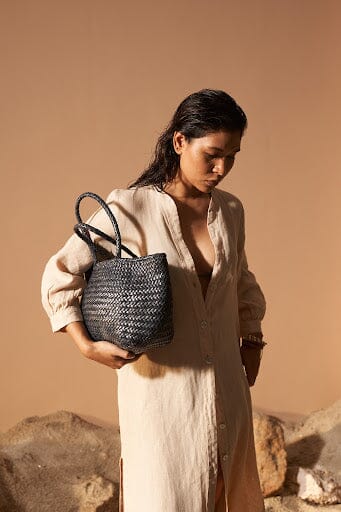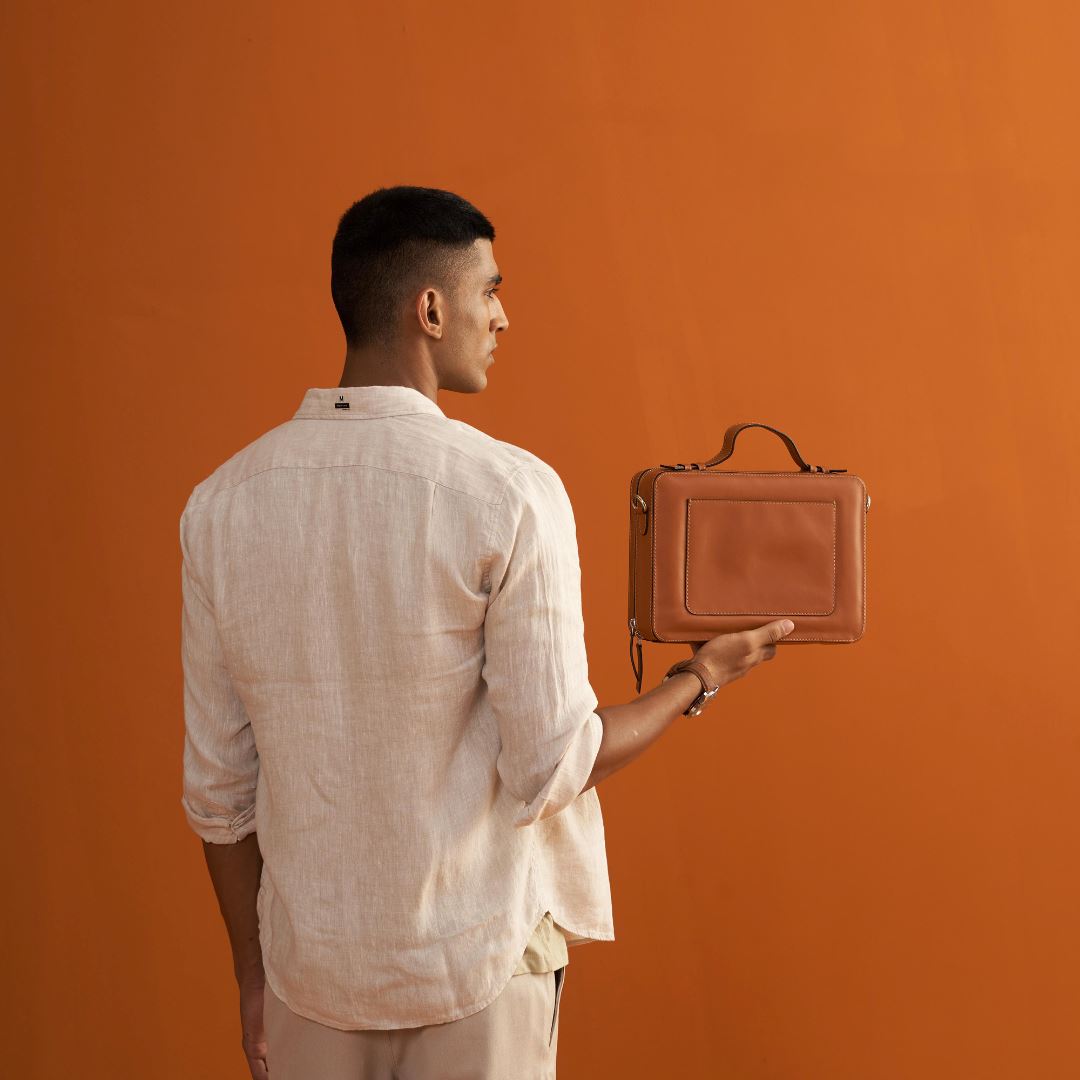Article: Our Newest Collection, Heath — and How It Proves That Handweaving Is More Than Just Tradition

Our Newest Collection, Heath — and How It Proves That Handweaving Is More Than Just Tradition
Our love for handmade leather accessories is not something newfound. Handmade leather crafts date back to 2200 BC and have a profound connection to Indian cultural and geographical history. This deep-rooted affinity for artisanal brilliance forms the baseline in our latest collection ‘Heath’, and spotlights, in particular, the ancient art of leather weaving.
Leather weaving is the process of interlacing two or more strands together to form a pattern. It is a rather tedious process that requires a kind of precision and intricacy that only trained craftsmen can acquire. Currently, the art form is being kept alive by various artisan groups dotted across the country, including the artisans of Madras.

Source: The Economic Times
Madras (now Chennai) has been the largest trading center for hides and skins since the British Raj days in India. After France, India is now the master manufacturer of leather crafts in the world — and leather weaving is one of the many forms of art that these artisans preserve.
Leather weaving involves the use of good-quality leather that is supple enough to be cut into fine strips. To respect the delicacy behind the craft, we made conscious use of vegetable-tanned leather in our newest launch.
Vegetable tanning of leather is an age-old technique that dates back to ancient Egyptians and is perfected by only limited artisans. Genuine vegetable tanned leather uses only natural tanning agents as opposed to chrome tanned leather, and is preferred not simply because of its environmental merits but for its adaptability, surface aesthetics, and longevity in use. Artisans take pride in the natural markings and imperfections that come with naturally tanned leathers as proof of their authenticity.
The continued popularity of this time-honoured craft begs the question: what is it that makes leather weaving such a sustained practice, even in this era of instant gratification?
For ‘Heath’, we did a little digging on that front:
- It’s Authentically Indian
In its essence, all handwoven leather products are made by hand without the help of any machinery. It dates back to the time when India used to produce the world’s most luxurious craft products relying solely on manual effort. Thus, handspun or handwoven is not just a trademark of beautiful art but also a proof of long-haul labour, and a distinctive Indian identity.

Source: Melvin&Hamilton
Did Someone Say Ergonomics?
Woven leather products are exceptionally lightweight and relatively easy to store. A remnant of the traditional bamboo braid, leather weave products are not only comfortable to carry but also functional and flexible.
Spoilt for Choice
What gives these bags their unique character is the versatility they offer depending on the type of weave they employ. There exist a number of different kinds of traditional weaving patterns, all of which can yield several more variations simply by experimenting with the width of the strips. The Bucket Weave Tote, a MISTRY bestseller, gets its distinct surface from a careful sequence of weaving manouevres.
A Real ‘Forever’ At Last!
Don’t be fooled by the lightness of handwoven leather, its strength is unmatched. Leather is already an extremely durable material; the added tenacity of weaving makes it exceptionally long lasting, eliminating the need for even a single stitch. A good hand woven leather bag won’t hang up on you that easily.
As an exponent of traditional leather practices, MISTRY respects the historical significance of this delicate art and aims to bring it to the mainstream through timeless silhouettes, elegant aesthetics and impeccable construction. If you’re looking to make a statement that stands for more than just style, we’ve got a whole collection right here, just for you.
Check out the collection here!






